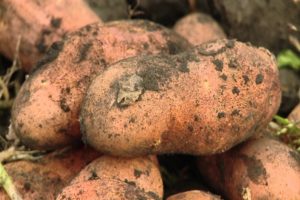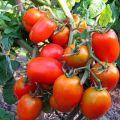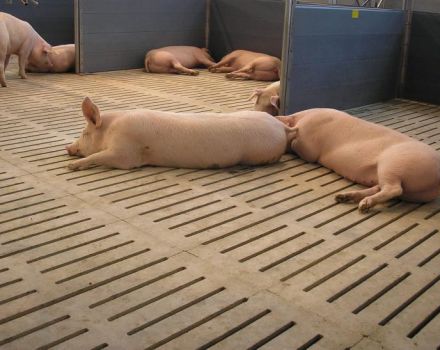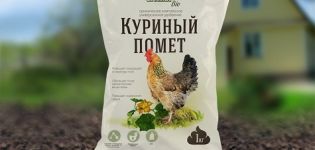Descriptions and characteristics of the best potato varieties and rating of 2020
Potatoes are considered the second bread today, they are part of a large number of dishes. However, not so long ago in Russia they did not know about potatoes; the first plants were considered decorative. Only from 1839 in Russia began to massively grow potatoes and use their tubers for cooking. Taking into account the peculiarities of the region, and choosing the right potato variety for planting in 2020, you can ensure yourself a rich harvest.
What varieties of potatoes to plant in 2020
Gardeners of the Moscow Region should pay attention to the following varieties of potatoes:
- Zhukovsky early;
- Priekulsky early;
- Early Rose;
- Falensky;
- Gala.
The listed varieties bring a rich harvest, are frost-hardy, but at the same time they can undergo certain diseases. To prevent disease, seed potatoes must be dipped in a manganese solution before planting.
Early root crops
Early potato crops are valuable because the harvest can be harvested at the beginning of the summer season. However, such potatoes cannot be stored for a long time, the tubers can quickly deteriorate. Nevertheless, early maturing varieties are in demand among summer residents, as they ripen quickly and make it possible to enjoy homemade potatoes in June.
Sandrine
Smoothness of tubers, superficiality of eyes are noted. The tuber shape is a long oval. The rind is yellow, like the flesh. Potatoes are poorly susceptible to mechanical damage and black spot.
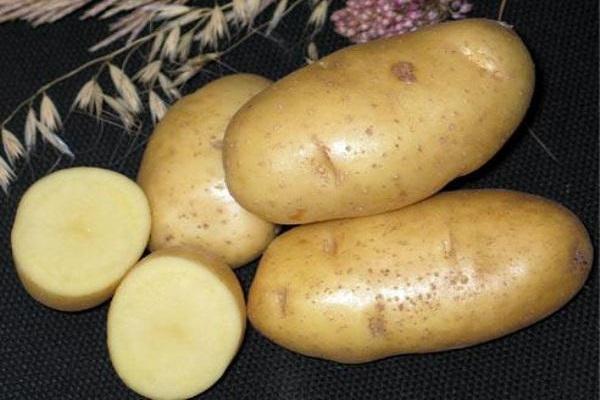
Madison
A new potato variety, which was bred by German breeders and cultivated in a temperate climate. Has the following features:
- large tubers, weighing 96-179 grams;
- rounded shape;
- tubers look neat, aligned in weight and size;
- the peel is yellow;
- the eyes are characterized by superficiality, scarcity, and inconspicuousness;
- starch concentration does not exceed 17 percent;
- tubers contain many protein elements, mineral salts, vitamin components, carotene.
Christel
A high-yielding variety that allows the gardener to collect up to 2 kilograms of root crops from each bush. However, this requires the use of nitrogen supplements. Root vegetables contain 18 percent starch. The advantages of this variety are as follows:
- resistant to diseases affecting potato fruits;
- can be stored for a long time, compared to other early maturing varieties;
- has excellent taste.
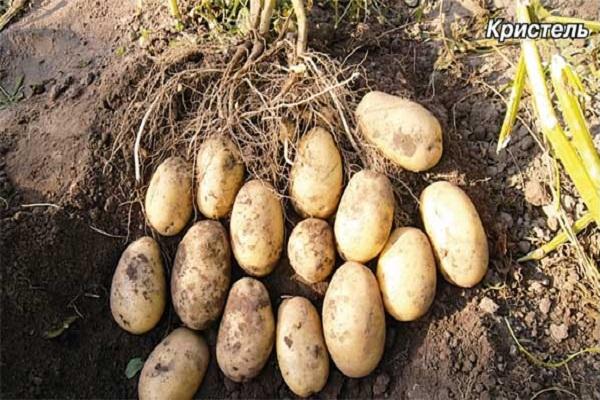
Capri
A variety of German selection, the roots are oval in shape. Ripens in two months. Contains 15 percent starch. Root weight - 100 grams. Up to ten potatoes can be harvested from one bush. Productivity - 200 centners per hectare.
Gulliver
Root crops are even. The mass of one tuber is approximately 120 grams. The tubers are oval in shape, with small roundings at the ends. The peel is yellow, smooth. The starch content is 18 percent.
Gulliver potatoes can be stored for a long time, they are also resistant to diseases. 30 days before harvesting, the land must be fertilized with phosphate compounds.
Medium ripening varieties
This category includes varieties that can be harvested within 60-75 days. Potatoes contain a lot of starch and are resistant to temperature fluctuations. It can also be stored and transported for a long time.
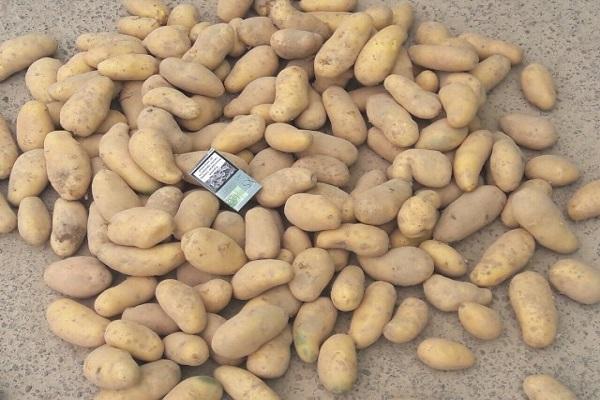
Granada
Potatoes are of medium size, oblong oval shape. The mass of one tuber is about 95 grams. The eyes are harmoniously located throughout the peel. The rind is yellow, like the flesh.
Grandmother
A mid-early potato variety bred in the Penza Research Institute of Agriculture. Resistant to heat and drought, late blight. The peel is red with a tinge of purple. The mass of one root crop is 100-130 grams. The starch content is 18 percent. Potatoes are ideal for both frying and mashed potatoes.
Arctic
Arctic potatoes are of the mid-season type. Root crops are beige, have the shape of a rounded oval. The mass of one tuber is 90 grams. The eyes are small, there are about ten eyes on one tuber. The starch content is 12 percent.
Elena
Domestic potatoes. Ripens in 75 days. The starch concentration is 19 percent, the weight of the root crop is 120 grams. The gardener receives up to 12 potatoes from one bush. Productivity - 220 centners per hectare. The peel is red, the flesh is creamy.

Zlatka
Mid-season potato variety, ripens in 70 days. The roots are large, the flesh is yellow. The potato has an excellent taste, is friable, resistant to late blight. The bushes are almost not affected by the Colorado potato beetle. Long-term storage is allowed.
Varangian
The variety was bred at the Lorkh Research Institute. Ripening period is average. Root crops are fully formed 100 days after planting. Spreading bushes, each of them forms five stems with large leaves. The bushes bloom for a short period.
The variety is characterized by increased productivity. It is possible to get 7 tubers weighing 130 grams from one bush.
Epic of Siberia
The variety is of medium ripening, capable of producing an excellent harvest even in drought conditions. The rind and flesh are yellow. Root vegetables can be used for frying, mashed potatoes, soup, fries.
Alouet
Medium early potatoes, ripening 80 days. Contains 21 percent starch. The peel is red in color. Before planting, it is advisable to subject the potatoes to a temperature shock. Sprouts should not be broken off more than once, otherwise the yield may decrease.
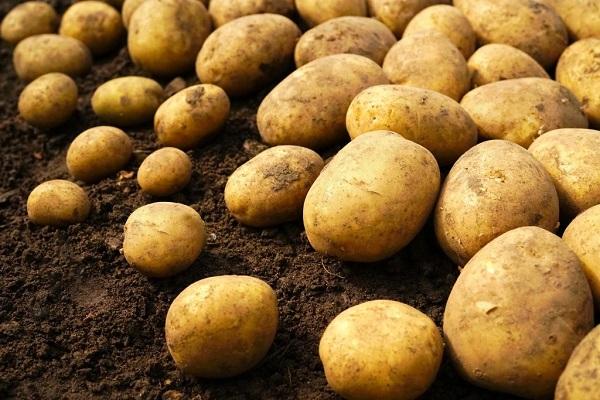
Mid-late and late-ripening
Such varieties of potatoes retain useful elements for a long time. They mature 90-125 days after planting. They need to be planted in May. Late-ripening varieties are fruitful, contain a lot of starch.
Cerata KVS
Bushes grow straight, elongated, white flowers. Root crops are oval in shape, weight does not exceed 143 grams. The peel is scarlet, the eyes are located at an average depth.
Masai
Medium late potatoes with oval-shaped roots. Contains 16 percent starch. The weight of one tuber does not exceed 140 grams. Up to 13 tubers can be harvested from one bush. The highest yield is 430 centners per hectare.
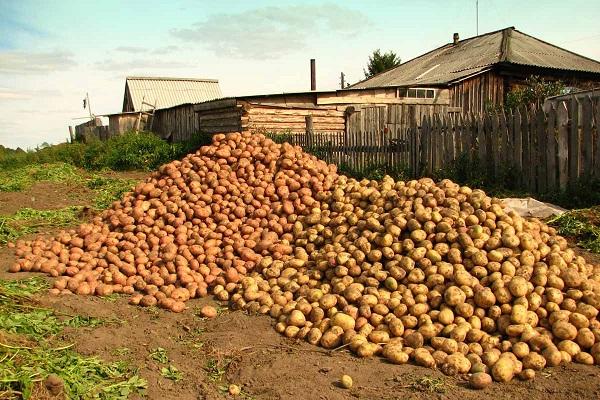
Kazachok
This is a domestic variety, whose roots are oval. Potatoes ripen in 105 days. Starch content does not exceed 14 percent. The weight of one potato is about 115 grams.The gardener gets about 8 tubers from one bush. The rind is yellow, the pulp is also. This variety is recommended for planting on land plots in the Far East.
The Kazachok potato is very resistant to cancer. However, it does not have protection against nematodes, late blight. It has a good taste and can be used for making soups, salads, French fries.
The most productive varieties of potatoes
The most productive potato varieties:
- Idaho (up to 550 centners per hectare).
- Bellarosa (up to 350 centners per hectare).
- Rosara (up to 530 centners per hectare).
- Gala (up to 340 centners per hectare).
- Good luck (up to 960 centners per hectare).
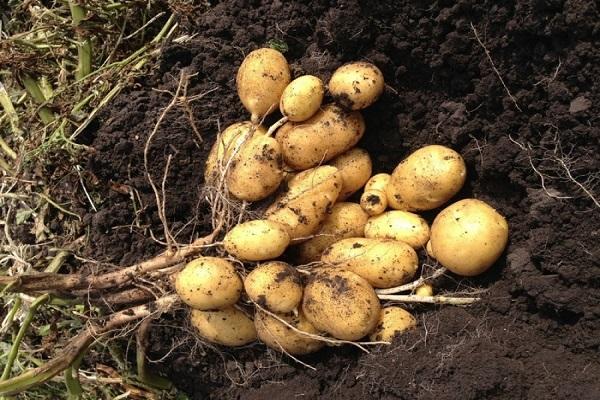
The most delicious varieties
The most delicious potato varieties:
- Picasso. It has a skin of small thickness, so you can not peel it, but wash it before cooking.
- Tuleyevsky. It boils quickly, the peel is thin.
- Dauphine. Potatoes bred in the Netherlands, exported to European countries and the Russian Federation.
- Share. It produces a good harvest and at the same time has an excellent taste.
Elite tubers
The advantages of elite potato varieties are as follows:
- bring a good harvest;
- resistant to disease;
- good taste;
- can be grown even in harsh climates.
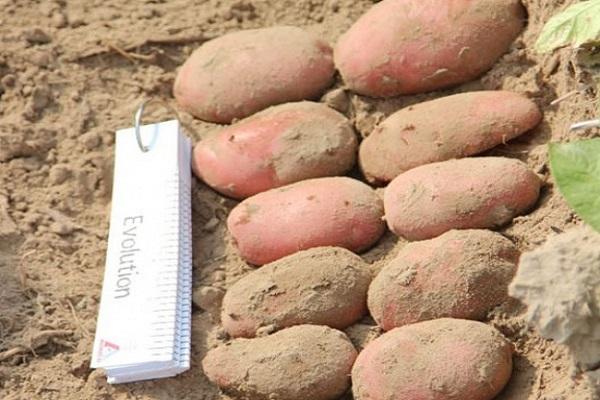
Elite potato varieties:
- Evolution. It is characterized by large roots that grow rapidly. Up to twelve tubers can be obtained from one bush. Root crops are oval in shape, the skin is red.
- Colombo. The 1st crop can be harvested a couple of months after planting. The gardener gets thirteen tubers from one bush.
- Flamenco. 1st potatoes appear after three months. The peel is pink, the roots are oval. The average mass of a potato is 145 grams. Up to fourteen tubers can be harvested from one bush. The advantages of the variety include increased productivity, resistance to arid and high-temperature conditions. Minus - a tendency to late blight, nematode.
- Arizona. Ripens in 75 days. Root crops are large, oval-shaped. The peel is yellow. The advantage of this variety is that the roots grow in low-temperature conditions. The harvest can be obtained even if the spring was cold.
Choosing varieties for different regions of Russia
When choosing a variety of potatoes for planting, you need to consider in which region the land is located. For example, a variety that will yield a crop in the Far Eastern region may not be suitable for the Altai Territory.
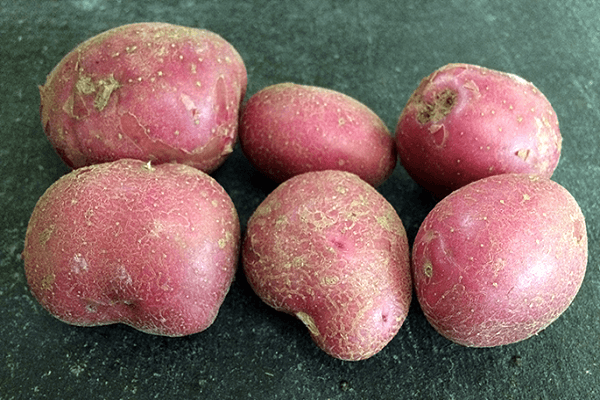
For the middle lane
The Central zone of the Russian Federation includes the following cities:
- Bryansk;
- Vladimir;
- Ivanovo;
- Kaluga;
- Moscow;
- Ryazan;
- Smolensk;
- Tula.
Gardeners living in the Central zone of the Russian Federation need to pay attention to the following varieties of potatoes:
- Isle of Jura. Average ripening period. From one hectare it is possible to get up to 400 centners. One root vegetable has a weight of 185 grams. Potatoes have the shape of an oblong oval, have small eyes. The peel is yellowish, rough, the pulp is lighter. Starch content - 16 percent.
- Axon. The highest yield is 410 centners per hectare. The weight of the root crop is 139 grams. The shape of the potatoes is an elongated oval, the eyes are of medium depth.
- Almera. The highest yield is 490 centners per hectare. The weight of the root crop is 142 grams. The peel is yellow, smooth. The starch content is 10 percent.
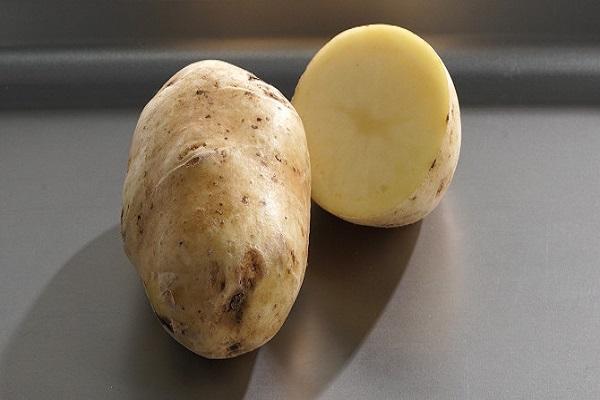
Urals and Siberia
The Ural region includes:
- Mound;
- Orenburg;
- Chelyabinsk;
- Bashkiria.
Potato varieties for gardeners in the Urals:
- Bashkir. Weakly susceptible to cancer and nematodes.
- Burnovsky. The starch content is 15 percent.
- Volare. The highest yield is 550 centners per hectare.
Siberia includes:
- Transbaikalia;
- Krasnoyarsk;
- Irkutsk;
- Buryatia;
- Yakutia;
- Tyva;
- Khakassia.

Potato varieties suitable for Siberians:
- Aramis. Root crops have the shape of a rounded oval, medium eyes, yellow rind.
- Borus 2.The highest yield is 240 centners per hectare, the average weight of a potato is 130 grams.
- Volcano. The starch content is 14 percent. Potatoes are resistant to cancer and other common diseases.
For the Moscow region
Directly for the Moscow region, the best varieties of potatoes are:
- Lugovskoy. There are few eyes, the peel is pink. It is resistant to late blight and cancer.
- Detskoselsky. The tubers are light pink and have a good taste. Each potato weighs 110 grams.
- Favorite. The peel is light, the weight of the potatoes is 110 grams. Potatoes do not like high humidity, so they need to be watered sparingly.

For Altai Territory
Altaians who own a land plot and want to plant potatoes on it can choose one of the following varieties:
- Baron. The maximum yield that a gardener can get is 365 quintals per hectare. The average weight of a potato is 185 grams. The potatoes are oval in shape, the skin is yellow. The starch content is 14 percent.
- Bravo. The yield is 440 centners per hectare, the average weight of the root crop is 165 grams, the starch content is 14.5 percent.
- Irbitsky. The potatoes are round, the eyes are small, the peel is reddish, the flesh is yellow. The starch content is 15 percent. Resistant to the virus, which rolls the leaf plates, as well as cancer and nematodes.
Don't forget to use foliar and fertilizer when growing potatoes. Only then will you be able to harvest a good harvest and enjoy homemade potatoes from your own garden, making mashed potatoes, fries, salad or soup from them.

